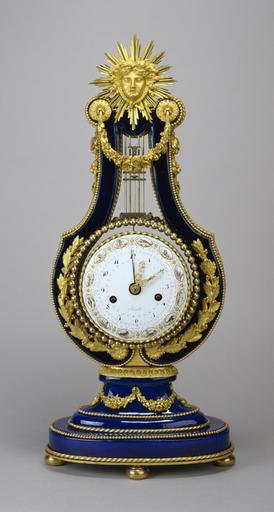MAKE A MEME
View Large Image

| View Original: | DieudonnĂŠ_Kinable_-_Mantel_Clock_in_the_Form_of_a_Lyre_-_Walters_58232.jpg (964x1799) | |||
| Download: | Original | Medium | Small | Thumb |
| Courtesy of: | commons.wikimedia.org | More Like This | ||
| Keywords: DieudonnĂŠ Kinable - Mantel Clock in the Form of a Lyre - Walters 58232.jpg French clockmaking at the time of Louis XVI is unsurpassed in the delicacy and grace of its decoration and in the imagination displayed in its forms Perhaps the most elegant shape was that of the lyre derived from the ancient Greek musical instrument It was introduced as early as 1758 and was employed for important clocks throughout the remainder of the century The body of this example is of Sčvres porcelain with exceptionally fine applied gilt-bronze ornaments The upper part of the pendulum is formed to represent the strings of the instrument The dial face is enameled with signs of the zodiac by the distinguished Geneva-born artist Jean Coteau ca 1739-1812 and is signed Kinable active 1780-1825 ca 1780 1800 soft-paste porcelain ormolu mounts and gilt bronze cm 60 8 accession number 58 232 7287 Lord Willoughby d'Eresby E M Hodgkins date and mode of acquisition unknown William T / Henry Walters Collection Baltimore date and mode of acquisition unknown Walters Art Museum Henry Walters Acquired by William T or Henry Walters Maryland Heritage European Art at the Time of the Revolution The Walters Art Gallery Baltimore 1976 Going for Baroque The Walters Art Gallery Baltimore 1995-1996 Vive la France French Treasures from the Middle Ages to Monet The Walters Art Gallery Baltimore 1999-2000 place of origin France Walters Art Museum license Timepieces in the Walters Art Museum Clocks made of porcelain Sèvres porcelain in the Walters Art Museum Media contributed by the Walters Art Museum needs artist review Pendule 18th-century desk clocks Vive la France French Treasures from the Middle Ages to Monet Bertie family | ||||